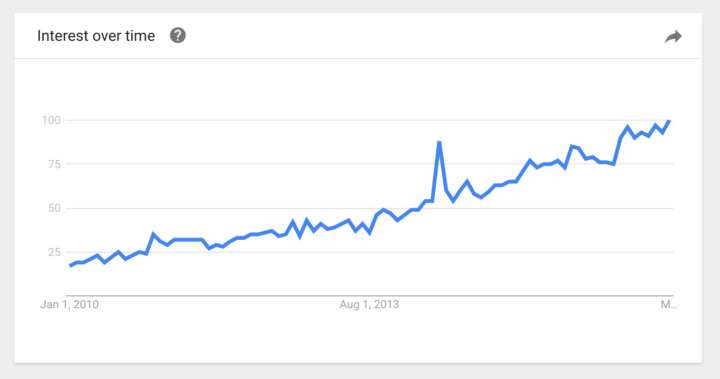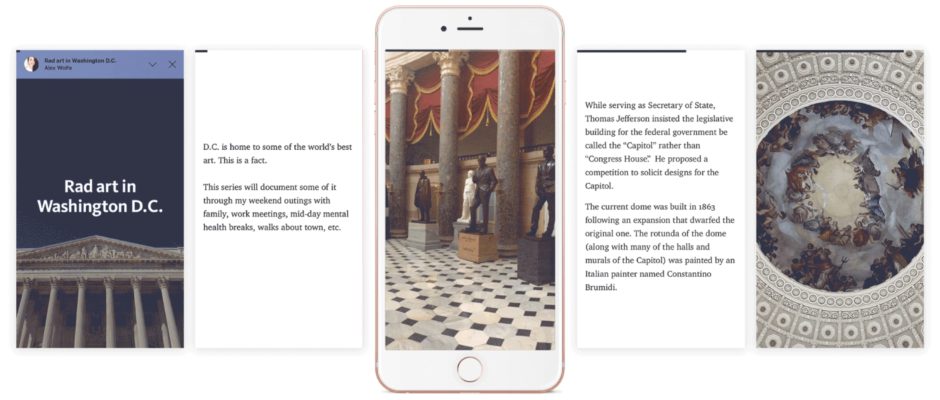Medium’s subscriptions are here — and with it, a vote of confidence in the future of paid content and publishing online.
After Ev Williams’ rather large hint back in January, Medium has this week unveiled more details on their proposed future for monetization.
This is important because, given Medium’s (and Ev’s) position in the industry, it tells us not only how Medium plans to monetize itself as a company, but it also discloses the bet that it’s making on the future of written content as a business.
In the aftermath of the digital revolution, (written) content has arguably been the hardest to monetize, compared to other mediums:
- Audio content saw stubbornness from publishers, a battle with piracy, and was eventually saved by the iTunes Music Store and subsequently online streaming services. (Sure, the model has some problems to iron out, but publishers are making money today).
- Video content saw even more stubbornness from publishers, another fight against piracy, and the rise of paid online streaming services. In the U.S., cable bundles are still highly profitable — but it’s quite clear that revenue is shifting slowly away from these services. Meanwhile, YouTube has found a sustainable way to monetize its vast library of user-generated video content with ads.
- Written content on the web virtually killed newspapers (you guessed it, they were stubborn), who are still scrambling to find some form of sustainable model for the future. Traditional display advertising is dying a slow death — the majority of content today is consumed through social platforms like Facebook, pulling traffic away from the publishers.
Remember when building a personal blog and slapping some display ads on the page was a viable strategy? How times have changed.
Understanding the announcement
This looks to be the first version of something much bigger for the Medium product, and the features advertised today suggest a move towards Ev’s high level vision for the future of publishing on the web. The language on the landing page even reinforces this, playing to the notion that people subscribing today are not so much purchasing features, but rather “showing their support” for the future of the platform.
Medium, after all, does a great job as positioning themselves as a platform, even a movement — something more than a product, a group of people working together to advance their future. Just in the way that Airbnb, Slack and other such startups have done.
Membership features
$5/monthly cost. This is important. The price point needs to be right, for consumers to effectively fit the subscription into their life, alongside the increasing number of existing subscriptions. $5 is the price point chosen by newspapers such as the Guardian. By aligning with this, they’re occupying the same headspace, rather than positioning themselves on the level of a Netflix or Spotify. In this regard, the difference between $5 and $10 is huge. $5 is a coffee. $10 is more than a coffee.
Ad-free. The key thing here is the inverse — the fact that non-subscribers are going to have an ad-supported experience on Medium. While the ad-supported model hasn’t been working for the company, it obviously brings in significant-enough revenue for them to still pursue it for the vast majority of users. Of course, if they’ve spent the last year or more building ad-serving functionality into the platform, it may just make sense to not throw it away.
Exclusive stories. Probably the biggest hinted change to the platform is the intention to support “paid content” — stories that are only available to paid subscribers. What this means is that Medium will have support for paying out a chunk of their subscription revenue to publishers on the platform. Tons of unanswered questions here (see the section below), but this potential to allow publishers to monetize their own content on Medium is huge.
Early access to new features. The first of these new features is slated to be a redesigned homepage with better content discovery. It’s always nice to feel part of an “exclusive” group as Ev is outlining here, particularly with the promise of more of a say in the direction of feature development (as is stated).
Upgraded reading list. This could have been part of the new features outlined above, but is considered a large-enough addition that it stands well on its own. What does the upgrade actually involve? Sounds like a change to the UX, as well as the ability to read offline on mobile. This is nice, and will likely keep more people inside the Medium app, rather than saving content out to a read-it-later app like Pocket (which is what I do today — it already has the offline functionality for free).
The additional features (or the ones we can see right now) may not change the world, but the continual refinement of the reading and publishing experience on Medium is what’s led to the platform becoming my (and many others’) preferred place to read, write and share ideas. The team has clearly sweated every single detail when it comes to UX. Whether typography, editing or the more recent addition of interactive ‘Series’, the overall experience alone counts as a stand-out feature for many users.
Can content subscriptions work?
And more importantly in this case, can they work at scale?
Those who follow the media and tech industry closely will be aware of at least one success story in monetizing content through subscriptions. Ben Thompson’s Stratechery, a one-man operation, offers free weekly content plus expanded additional analysis and exclusive daily articles through a $10 monthly subscription.
Stratechery’s subscription is clearly tailored for the tech & media business niche — a niche for which Thompon has seemingly hit the sweet spot. In 2014 he announced that he already had 1,000 subscribers (implying a run-rate of $100K). Fast forward 3 years, and… well Ben hasn’t shared recent numbers. But the site appears to be going from success to success.

The rise of curation

The Stratechery example proves that people are willing to pay for a subscription to exclusive content, if you provide them with enough value. Targeting a highly-specific niche allows you to constantly refine and double down on the value you provide for that niche. The challenge, then, is cracking content subscriptions at a larger scale.
But it might just work for Medium. Having reached a tipping point of content fatigue, people are starting to look for alternative ways to consume media that’s valuable to them. The rise of content curation has spawned directly from this — the idea of a human element of careful selection and pre-approval becomes increasingly attractive when everywhere you go online, brands are competing for attention.
What I believe people will pay for, is clarity and the removal of noise from their lives. In the form of a single “go-to” platform for reading intelligent articles on relevant topics, Medium could fill this space.
On journalism
I spoke to Ghost.org founder John O’Nolan recently (you can listen to the full interview here). John’s overriding mission with Ghost (a hosted publishing platform) is to solve the problem of a sustainable business model for Journalism — which he believes is currently fundamentally broken.
https://soundcloud.com/chartmogul/ghost-ceo-john-onolan
In many ways he’s right — the go-to model for monetizing content since the web 2.0 days has been advertising. On the surface there’s nothing wrong with ads on a web page. But when a business relies on such a model for the vast majority of revenue, it’s going to shape the way that business approaches creating and steering their content strategy in a big way.
Simply put, display ads are usually paid per impression. More impressions = more money. This, in many ways, is at odds with the principles of “good” journalism — to remain neutral, and inform people. Given the choice of writing about the latest government policy change, or the gorilla in the local zoo who’s learned to style his own hair… well, you get the idea. In 2017, the goal is to provoke an instant, strong reaction in as-broad an audience as possible, regardless of the topic.
“It’s time for thoughtfulness to prevail. That means transforming not just the experience around reading and writing, but also the economic model that determines which stories are told, clicked on, and compensated.”
– Ev Williams, Founder of Medium
John O’Nolan certainly believes there’s a better model for monetizing journalism — and content on a wider scale. And his solution matches this latest move from Ev and the team at Medium: Paid subscriptions. With subscriptions, the company can rely on a fixed, predictable flow of revenue and can focus their efforts on delivering ongoing value for subscribers.
The biggest remaining questions
“One thing I’m a little unclear on is whether I’m paying for Medium to hire new writers and publish new material, or whether my money is going towards the authors of the articles I’m reading (like a micro-transaction system).”
– Daniel Samuels (on ProductHunt)
There are a lot of things we simply don’t know at this point about Medium’s subscription model, the largest of those things being how they actually plan to reward writers for publishing premium content, and who that will be available to. Until the details are fleshed out, it’s unclear how big a bet the company is taking on shaking up the way we consume written media online.
- Who is allowed to write “premium” content? (Almost certainly a small pre-selected group at first, but will they open it up?)
- Will the improved discovery tools fix the “tech bubble” problem faced by Medium today, and allow it to break into a more mainstream audience?
- Will they be able to convince enough people to invest $5 per month in the platform, with so many other subscriptions cluttering consumers’ lives?
- Can they convince even more publishers to move over to their platform, and give up their owned web properties?
If anyone can make these bold moves to drive the written content space forwards, it’s Ev Williams and his team at Medium. Armed with his product foresight, I’m welcoming this move away from the de facto revenue model and the changes that would bring.
“We invite you to join us as a paid member and to help support an ad-free platform that delivers the right type of content: the type that can only be created when independent writers and publishers are rewarded based on value rather than clicks.”
(The Medium Membership page)
Further reading
- Memberships (Medium’s landing page)
- Medium releases Memberships (Hacker News discussion thread)
- Medium launches memberships for $5 per month (The Verge article)
- Medium Membership (ProductHunt discussion thread)
